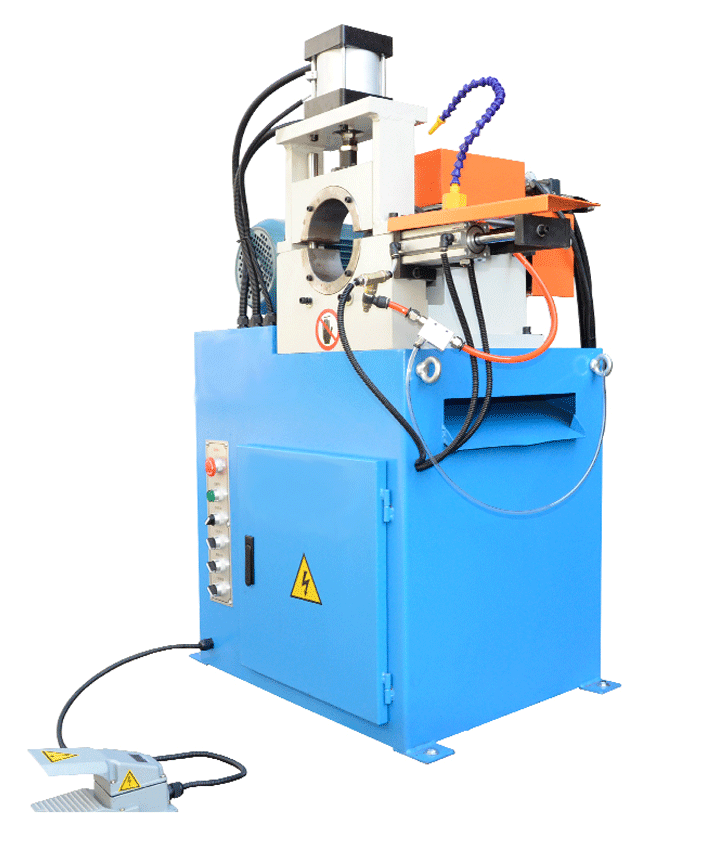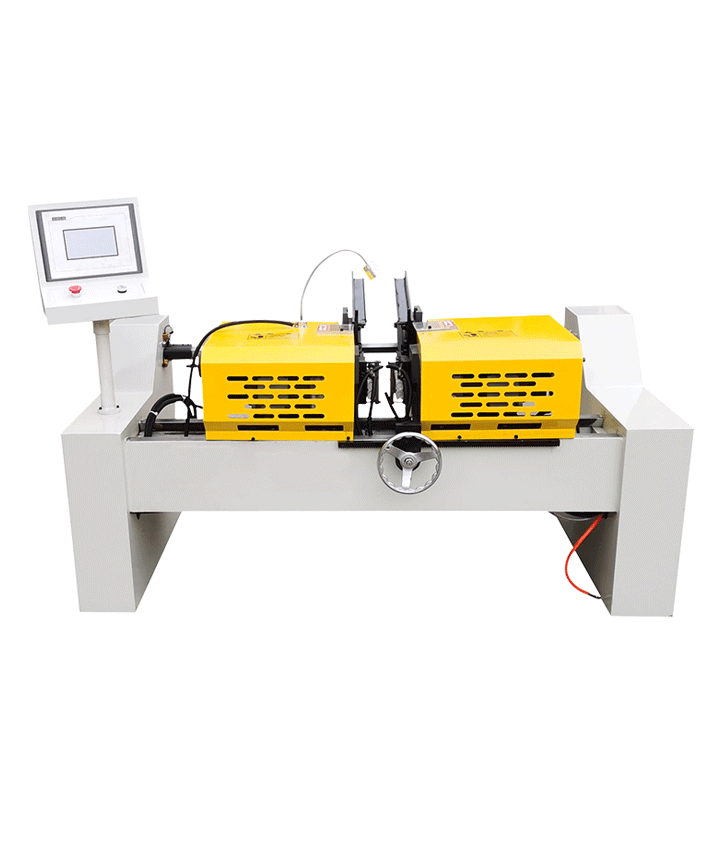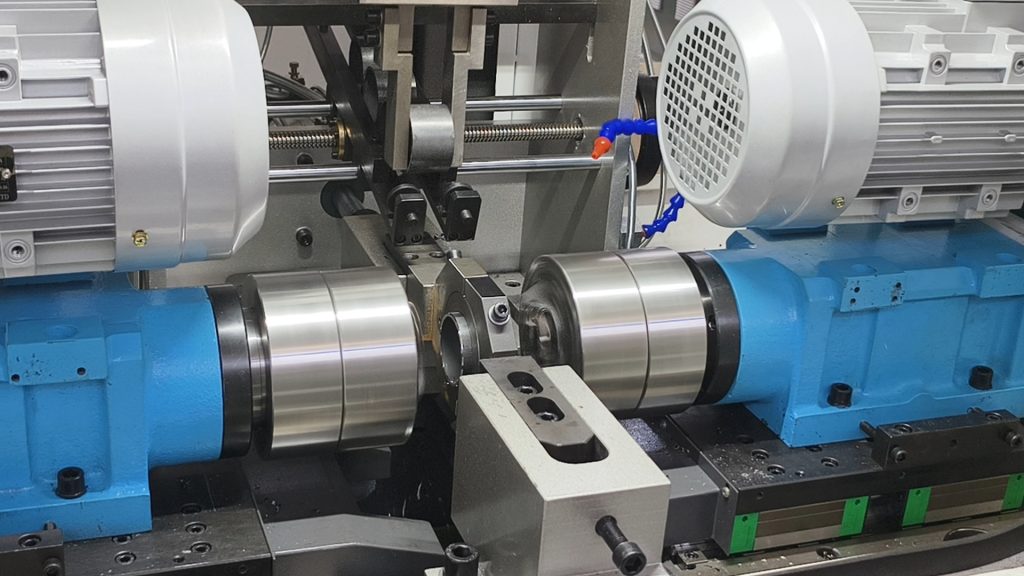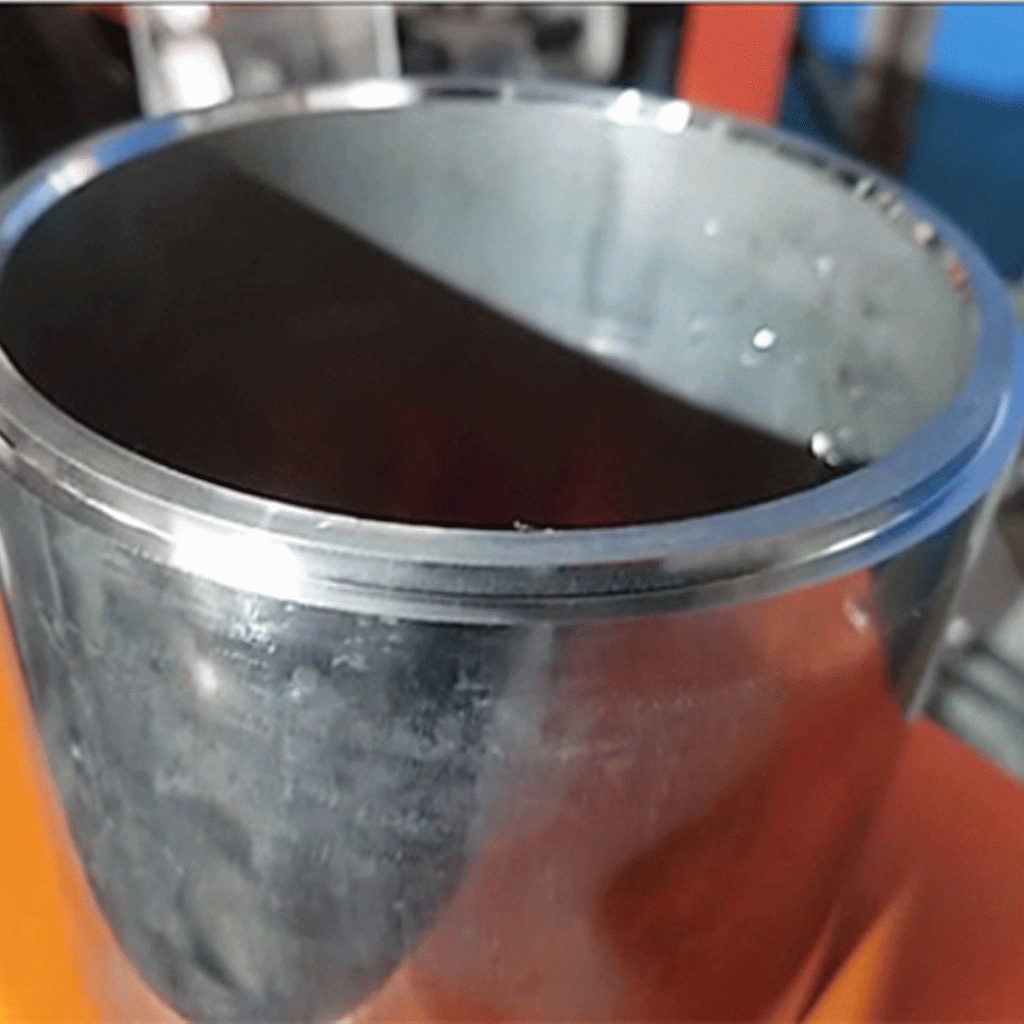The Development, Applications, Usage, and Precautions of Chamfering Machines
Introduction
Chamfering is the process of removing the sharp edges or corners of a workpiece to create a beveled edge. This is particularly important in manufacturing and machining to prevent damage, improve aesthetics, and enhance the functionality of the parts. Chamfering machines, which are designed to perform this task efficiently, have evolved over time to meet the increasing demands of precision and productivity. This article explores the development, applications, usage, and precautions associated with chamfering machines
.

Development of Chamfering Machines
The history of chamfering machines is closely tied to the advancement of industrial machining processes. In the early days of manufacturing, chamfering was done manually using simple tools like files or hand tools, a process that was time-consuming and imprecise. The invention of power tools in the late 19th and early 20th centuries paved the way for automated chamfering solutions. Initially, these machines were used for simple tasks in industries like construction and metalworking.
As the industrial revolution progressed, demand for more accurate and efficient machining grew. This led to the development of specialized chamfering machines designed to handle high-volume production with minimal human intervention. These early machines were often based on basic rotary cutting tools and could chamfer only the edges of flat materials.
The real transformation came with the development of CNC (Computer Numerical Control) technology in the 1970s. CNC chamfering machines enabled manufacturers to program the machine to perform highly precise and repeatable cuts, leading to greater consistency and reduced labor costs. CNC chamfering machines also allowed for complex chamfering processes that could be integrated into multi-step manufacturing processes, streamlining workflows and increasing throughput.
Over the years, chamfering machines have seen further refinements, including the incorporation of high-speed spindles, automated feeding systems, and advanced software for more complex geometries. Today, chamfering machines are integral to industries ranging from automotive manufacturing to aerospace, providing fast and accurate edge treatments.

Applications of Chamfering Machines
Chamfering machines have broad applications across various industries. Below are some of the key areas where these machines are commonly used:
- Metalworking and Machining: In metalworking, chamfering is essential for creating smooth, finished edges on metal components. Whether it’s for pipe fittings, mechanical parts, or structural elements, chamfering ensures parts can be easily assembled and fit together. In addition, chamfering can also help in preventing sharp edges that could cause damage to other parts or be hazardous to workers.
- Automotive Manufacturing: In the automotive industry, chamfering is often used to improve the fit and performance of metal components such as engine blocks, cylinder heads, and transmission parts. Chamfering ensures that parts are easier to assemble and fit tightly, reducing wear and enhancing durability.
- Aerospace: Chamfering plays a critical role in the aerospace industry. Components in aircraft, such as turbines, wings, and frames, require chamfered edges to enhance aerodynamics and improve the safety and integrity of the structure. Additionally, chamfering ensures that joints and fastenings fit securely, preventing structural weaknesses.
- Electronics: In the electronics industry, chamfering is used for precision components such as connectors, pins, and housings, where clean edges are crucial for proper assembly and signal integrity. It can also help in reducing the risk of electrical shorts caused by sharp edges on circuit boards.
- Woodworking: While more common in metalworking, chamfering machines are also used in woodworking for creating beveled edges on furniture, cabinetry, and flooring. Chamfered wood edges have a refined appearance and are less prone to damage during handling and installation.
- Plastic and Composite Materials: As manufacturing has increasingly shifted to composite materials and plastics, chamfering has become important in the production of items such as plastic housings, components, and molded parts. Chamfering plastic helps in fitting parts together more easily and adds a professional finish to molded components.

How Chamfering Machines Work
Chamfering machines operate by rotating a cutting tool that removes material from the edge of a workpiece to create a beveled or chamfered edge. The machine can be configured with a variety of tools, including rotary cutters, abrasive wheels, and even lasers, depending on the material being machined.
The process typically follows these steps:
- Setup: The workpiece is securely clamped onto the machine bed, often using specialized fixtures or jaws. The chamfering tool is then positioned at the correct angle relative to the edge of the workpiece, often using computer control for high precision.
- Cutting: As the machine is powered on, the cutting tool moves along the edge of the workpiece, removing a thin layer of material to form a beveled edge. The depth and angle of the cut can be controlled either manually or through CNC programming.
- Finishing: After the chamfering process is complete, the workpiece is inspected for consistency and precision. Depending on the machine’s capabilities, additional finishing operations like deburring may be applied to ensure the chamfered edge is smooth and free of sharp edges.
Precautions When Using Chamfering Machines
While chamfering machines are highly effective, users must follow certain precautions to ensure safe operation and achieve the best results:
- Machine Calibration: Before using a chamfering machine, it is essential to calibrate it properly. This includes checking the alignment of cutting tools, the speed and feed settings, and the angle of the cut. Calibration ensures that the machine produces accurate results and prevents excessive wear on the tools.
- Operator Safety: Chamfering machines involve high-speed moving parts, so operators should always wear appropriate personal protective equipment (PPE), such as safety glasses, gloves, and hearing protection. It’s also crucial to ensure that safety guards and covers are in place to prevent accidental injury.
- Material Compatibility: Different materials require different types of cutting tools and speeds. For example, harder materials like steel may require slower speeds and more specialized tools than softer materials like aluminum or plastic. Always ensure that the chamfering machine is suited for the specific material being machined.
- Preventing Overheating: Prolonged operation of chamfering machines can generate heat, especially when cutting hard materials. Overheating can damage both the workpiece and the cutting tool. Proper cooling methods, such as using cutting fluids or air cooling, should be used to avoid this problem.
- Tool Maintenance: Regular maintenance of cutting tools is crucial for maintaining optimal performance. Dull or damaged tools can produce inaccurate results and even cause damage to the workpiece. Routine inspection and replacement of tools will help ensure smooth operation.
- Workpiece Handling: Workpieces should be securely fixed on the machine bed to avoid movement during the chamfering process, which can result in uneven cuts or accidents. Proper fixturing and clamping techniques should be followed to ensure the workpiece is stable.

Conclusion
Chamfering machines have played a vital role in modern manufacturing, providing a fast, efficient, and precise way to bevel edges on a wide range of materials. The development of chamfering machines has gone hand-in-hand with the growth of CNC technology, enabling manufacturers to produce parts with high consistency and precision. Whether in automotive, aerospace, or metalworking, chamfering machines are essential tools for improving the safety, functionality, and aesthetics of manufactured components. However, to maximize their benefits, operators must observe safety precautions, calibrate the machines correctly, and maintain the tools to ensure optimal performance.
